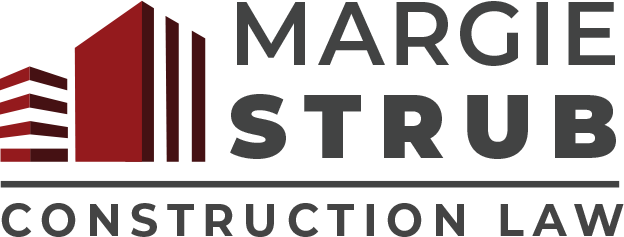Section 47 of the Construction Act
Key Takeaways
The decision of Infinite Construction Development Ltd. v Chen,[1] reviews the standard to meet to succeed on a motion to discharge a lien on the merits under section 47 of the Construction Act (the “Act”). The standard (or applicable legal test) is whether there is a triable issue in respect of any of the bases on which the defendant seeks the discharge and dismissal.[2] While, the defendant bears the primary evidentiary onus on the motion, both parties have an obligation to put their “best foot forward.”
The focus of this article is what is required for section 47 of the Act. However, if you read the full decision, the court in Infinite also discusses lienable supply, no extension of lien rights by the correction of deficiencies, and security for costs.
Background
In April 2019, the defendant homeowner, Chen, contracted with 10305391 Canada Inc. (“103 Canada”) for certain renovations. Work proceeded over the course of two years. In August 2021, Infinite Construction Development Ltd. (“Infinite”) claimed that 103 Canada had assigned the renovation contract to Infinite through oral agreement two years earlier. At that time, Infinite also registered a lien. In late September 2021, Infinite and 103 Canada executed a written assignment agreement.
The homeowner moved for an order discharging the lien under section 47. The homeowner argued, among other things, that there was no contract with Infinite and that Infinite’s lien rights had expired.
The Test Under Section 47
Section 47 provides that liens may be discharged where the claim is frivolous, vexatious or an abuse of process or on any other proper grounds. Section 47 has broad application and may be used for a variety of matters as there is no language which limits the court’s discretion to assess and decide what is a “proper” ground.[3] Because of its broad application, its processes can be similar to summary judgment motions under Rule 20 as well as processes that do not include a summary disposition on its merits.[4]
Where a discharge or dismissal is sought on the merits, the legal test under section 47 is whether there is a triable issue in respect of any of the bases on which the discharge and dismissal is sought.[5] On a motion seeking summary disposition on the merits, the principles set out in GTA General Contractors v 2566213 Ontario may provide guidance to the court, however, these principles do not limit the court’s discretion.[6]
On a motion to discharge on the merits, the moving party must tender cogent evidence to support that there is no triable issue.[7] That said, it is presumed that both parties have an obligation to put their “best foot forward.”[8] Without the presumption that both parties have led trump, it would be too easy for a lien claimant plaintiff to say that better evidence may be available at trial.
Interestingly, the court in Infinite observes that even if the genuine issue can be resolved on the motion, the court has wide discretion under section 47 such that it may conclude that it is more fair, just, and appropriate for an issue to be decided at trial rather than on the motion.[9] It will be intriguing to see if and how the courts elaborate further on this point.
Ground 1: No triable issue on the assignment of the renovation contract
On the alleged assignment of the contract, the court noted that given that the plaintiff was unaware of the alleged assignment of the contract, the respondent’s “best foot forward” evidentiary obligations were even more important as the circumstances of the scope of the alleged assignment was solely within the knowledge of Infinite. With that in mind, the court found that the evidence presented by Infinite did not support a triable issue that the purported oral agreement clearly showed an intention for 103 Canada to assign the renovation contract to Infinite. Infinite’s evidence was sparse and its affidavit failed to mention the term “assignment”.
Ground 2: No triable issue on the validity of the lien
On the validity of the lien, Infinite argued that it was a contractor, as that term is defined under section 1(1) the Act, being a “a person contracting with or employed directly by the owner or an agent of the owner to supply services or materials to an improvement”. If Infinite was a contractor, then there was a triable issue as to the timeliness of the lien. If Infinite was a subcontractor, the lien was out of time.
The court found that Infinite was a subcontractor. Notwithstanding that Infinite may have been the de facto general contractor, this was not pertinent to the definitions of contractor and subcontractor under the Act.[10] A contract with the owner (or agent of the owner) is required to meet the definition of “contractor” under the Act. Moreover, nothing under the Act prevents a general contractor, who has been contracted by the owner, from subcontracting with a second general contractor to perform the full scope of the first general contractor’s work.[11]
While the second general contractor would demonstrate all the indicia of a typical general contractor, and it could even be the “constructor” for the purposes of the Occupational Health and Safety Act, absent a contract with the owner (or an agent of the owner), the legal relationship would still fall within the definition of a “subcontractor.”
As a subcontractor, Infinite’s lien was out of time. Infinite tendered limited evidence with respect to the supply of lienable work within the 60 day period prior to registering its claim for lien. Accordingly, the court found there was no triable issue as to the validity of the lien.
1Infinite Construction Development Ltd. v Chen [Infinite] 2022 ONSC 3929
2 Infinite, at para 11.
3 Infinite, at paras 16 and 18.
4Infinite, at para 16.
5Infinite, at para 11.
6GTA General Contractors Ltd. v. 2566213 Ontario Inc. [GTA], 2019 ONSC 7370. The principles outlined in GTA are: (i) if a genuine issue of fact is determined, then the matter should be left to be determined by the trial judge, (ii) if it is not patently demonstrable that a party has no right to a lien, or unless the court is satisfied that the cause of action could not possibly succeed at trial, then the matter should be left to the trial judge, and (iii) credibility assessment, weighing the evidence and drawing of inferences are the function of the trial judge.
7Infinite, at para 21.
8Infinite, at para 23.
9Infinite, at para 18.
10Infinite, at para 23.
11Infinite, at para 60.


